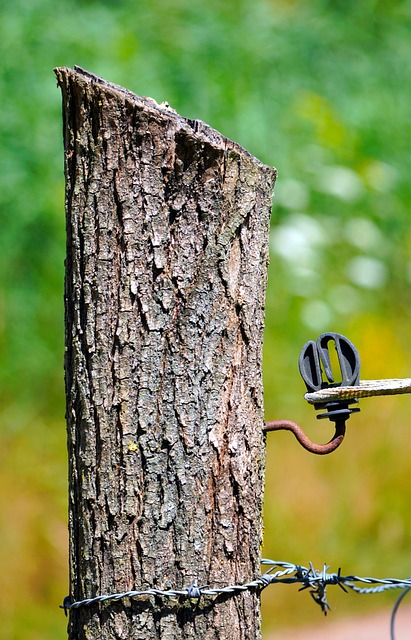Introducing Fence Staining and Sealing for Optimal Wood Protection
Fences serve both functional and aesthetic purposes, and proper care is essential to maintain their beauty. This article guides you through the process of fence staining and sealing, offering insights into the benefits, product selection, application techniques, and maintenance tips. Understanding these key aspects ensures your wooden fence not only enhances your outdoor space but also stands strong against environmental elements for years to come.
- Understanding Fence Staining: Benefits and Techniques
- Choosing the Right Stain for Your Wooden Fence
- Sealing Your Fence: Protection Against Elements
- Maintenance Tips for Long-Lasting Fence Appearance
Understanding Fence Staining: Benefits and Techniques
Fence staining is a popular choice for homeowners looking to enhance their outdoor spaces. It involves applying a colored sealant to wood fences, offering a range of benefits beyond simple aesthetics. Staining can protect the fence from water damage, UV rays, and mold growth, extending its lifespan significantly. By choosing the right stain, you can match your fence’s color to your desired aesthetic or create contrasting accents for a unique look.
The technique involves thoroughly cleaning the fence first to remove any dirt, grease, or existing finish. After sanding to ensure a smooth surface, applicators use brushes, rollers, or sprayers to evenly distribute the stain. Different application methods yield varied results, with rolling and spraying offering more even coverage. Once dry, a protective seal is applied to lock in the color and provide further protection against environmental factors.
Choosing the Right Stain for Your Wooden Fence
When considering fence staining and sealing, selecting the appropriate stain is a pivotal first step. Different stains offer various levels of protection and aesthetic appeal. Water-based stains, for instance, are environmentally friendly and easy to apply but may not penetrate as deeply as oil-based formulas. Oil-based stains provide better durability and resistance to fading, making them ideal for areas exposed to harsh weather conditions or heavy foot traffic.
Choosing the right stain also involves considering your fence’s natural color and the desired outcome. Some stains enhance the wood’s natural tone, while others can transform it entirely. Read product descriptions carefully, looking for specific colors and finishes to ensure the stain aligns with your vision for the fence’s appearance.
Sealing Your Fence: Protection Against Elements
Sealing your wooden fence is an essential step to protect it from the elements, extending its lifespan and maintaining its aesthetic appeal. Water, UV rays, and extreme temperatures can all contribute to wood fading, cracking, and eventually rot or decay. A good quality sealant acts as a protective barrier, shielding the wood from moisture penetration and blocking harmful UV rays that cause discoloration and weakening of the material.
By sealing your fence regularly, you create a durable finish that repels water, reduces splotching and staining, and prevents the need for frequent re-staining or painting. This process is relatively simple and can be done with minimal tools and supplies. Most sealants come in either a spray or brush-on form, allowing you to apply them evenly across the fence’s surface. Ensure proper ventilation during application and follow manufacturer instructions for optimal results.
Maintenance Tips for Long-Lasting Fence Appearance
Regular maintenance is key to keeping your wooden fence looking its best and extending its lifespan. After staining or sealing, be sure to clean the fence regularly with a soft brush and mild soap to remove any dirt, dust, or debris that may accumulate. This will prevent the build-up of grime which can hinder the effectiveness of your stain or sealer.
Additionally, keep an eye out for any signs of wear and tear, such as cracks, chips, or peeling. Promptly repair these issues using a suitable wood filler or putty to ensure water and moisture don’t penetrate the fence’s surface. A coat of fresh stain or sealer after repairs will help maintain the uniform appearance of your fence.
